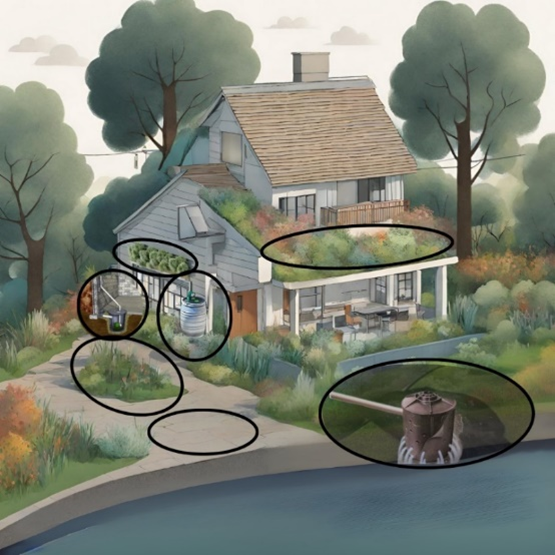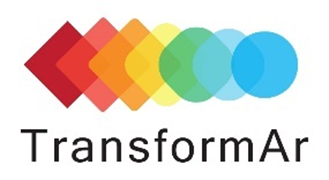All official European Union website addresses are in the europa.eu domain.
See all EU institutions and bodiesAs extreme weather events become more frequent, drainage systems struggle to keep up, and local governments lack the resources to address the challenge alone. To better understand public acceptance of citizen-led tools, a survey asked 2,013 Finns and Norwegians about their willingness to invest in stormwater management.
Key Learnings
About the Region

Climate Threats
Climate change increases the risk of urban and river flooding in Norway and Finland, leading to declining water quality due to more intense rainfall, rising temperatures, and shifting seasonal precipitation patterns. Urban flooding is becoming more frequent as heavy downpours overwhelm drainage systems, and impermeable surfaces prevent water absorption. River and waterway flooding is also worsening, with extreme precipitation and snowmelt raising river levels. Water quality is deteriorating as stormwater runoff carries pollutants into lakes and rivers. Warmer temperatures and increased nutrient runoff fuel algal blooms, threatening ecosystems, while extreme rain events overwhelm water treatment systems, raising contamination risks. Both countries are improving stormwater management, upgrading drainage infrastructure, and implementing Nature-based Solutions to address these challenges. However, rapid climate shifts continue to test local resilience efforts and highlight the need for citizen engagement.
Citizens Taking Action in Stormwater Management
Our results illustrate that citizens in Finland and Norway are keen to invest in stormwater management on their properties, especially when it reduces flood risk, requires little maintenance, cuts down runoff, and improves aesthetics. This enthusiasm underscores the critical opportunity for climate change adaptation and the need for further citizen engagement and awareness to drive broader adoption of those solutions.
Amalie Bjornavold, lead researcher of the study EnvEcon, University of Antwerp, Belgium
Understanding Public Acceptance to Invest in Stormwater Management in Finland and Norway
Within the TransformAr project, the team surveyed 2,013 citizens in Norway and Finland on their willingness to invest in stormwater management infrastructure on their private properties. The survey design follows the ‘discrete choice experiment’ method, which requires citizens to choose between different options. In this case, the researchers analysed which stormwater management solution citizen prefer (and under which conditions). The survey-based method seeks to establish the amount people are willing to pay for private stormwater management measures, the trade-offs they are willing to make, and which population groups are keener to act. This survey asked citizens to respond to the following hypothetical scenario:
“You are considering purchasing one of the below stormwater management measures for your private property to capture increased rainfall and stormwater. You own a detached 120m2 house with a garden.”
The hypothetical scenario also provided detailed information on the stormwater management measures presented, such as green roofs, green walls, rain tanks, permeable surfaces and rain gardens (Figure 2).

Costs and benefits of stormwater measures the respondents would consider
Once the respondents had the information on the stormwater management measures, they chose their preferred measure based on costs and benefits or the characteristics of the measure shown in Figure 3.
The trade-offs related to the level of (1) reduced damage risk to their house, (2) reduced stormwater run-off and pollution, (3) improved aesthetics of the property and community, (4) frequency of maintenance required, and (5) the price of the measure.

Willingness to Invest in Stormwater Management in Finland and Norway
In Norway and Finland, respondents indicated a clear favourable preference towards taking personal action and investing in stormwater management. In both countries, willingness to invest increases with higher risk reductions in property damage and reduced stormwater runoff. Nonetheless, some groups of the sample showed distinct preferences. Younger respondents, those with higher incomes and education, whose properties had a high market value, and those who had previously experienced floods (both on their property and in their neighbourhood) were more positive about taking action and showed more willingness to invest in Stormwater Management. Respondents who owned their properties showed a stronger preference towards improving their house's aesthetics.
Regarding the type of stormwater management solutions, both countries prioritise permeable pavements, emphasising low-cost, low-maintenance, and highly functional measures. Property ownership does not play a critical role in determining support for stormwater management measures, suggesting that tenants and homeowners alike are willing to contribute to these initiatives.
The survey found that citizens in Finland are willing to pay more to reducing damage to the house, while in Norway, citizens have a stronger preference for runoff reduction, and consequently pollution reduction. Finnish respondents value aesthetic improvements more than Norwegian ones:

Recommendations for Uptake
Citizens show strong willingness to invest in stormwater management on their properties in Finland and Norway. The citizens prefer permeable pavements over rain gardens, green roofs, green walls and green ditches, particularly because they reduce flood risk, require minimal maintenance, decrease runoff, and enhance aesthetics. Homeowners with higher-value properties are more inclined to invest in stormwater management, indicating that new subsidy programmes, or other direct financial support, could specifically support lower-income residents in adopting these measures. Targeted education and awareness campaigns can help bridge this gap by providing all citizens with guidance on stormwater management benefits and options.
Summary
Further Information

Contact
Keywords
Climate Impacts
Adaptation Sectors
Key Community Systems
Countries
Funding Programme
Disclaimer
The contents and links to third-party items on this Mission webpage are developed by the MIP4Adapt team led by Ricardo, under contract CINEA/2022/OP/0013/SI2.884597 funded by the European Union and do not necessarily reflect those of the European Union, CINEA, or those of the European Environment Agency (EEA) as host of the Climate-ADAPT Platform. Neither the European Union nor CINEA nor the EEA accepts responsibility or liability arising out of or in connection with the information on these pages.
Language preference detected
Do you want to see the page translated into ?


